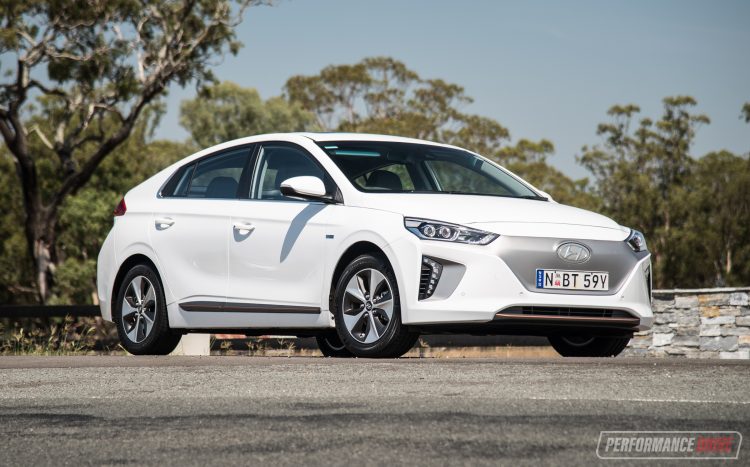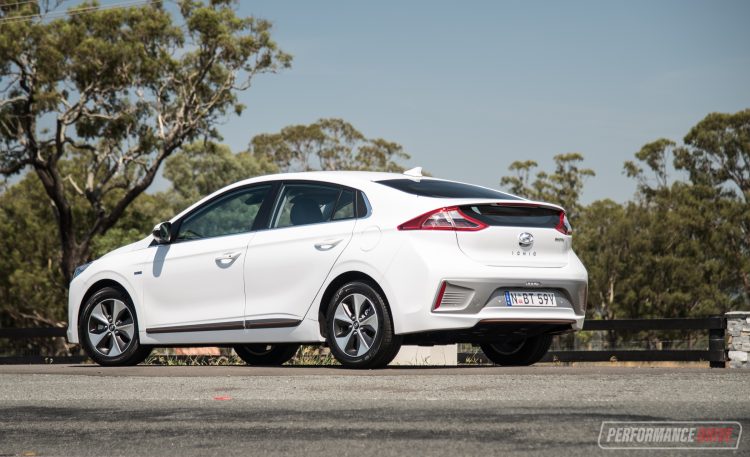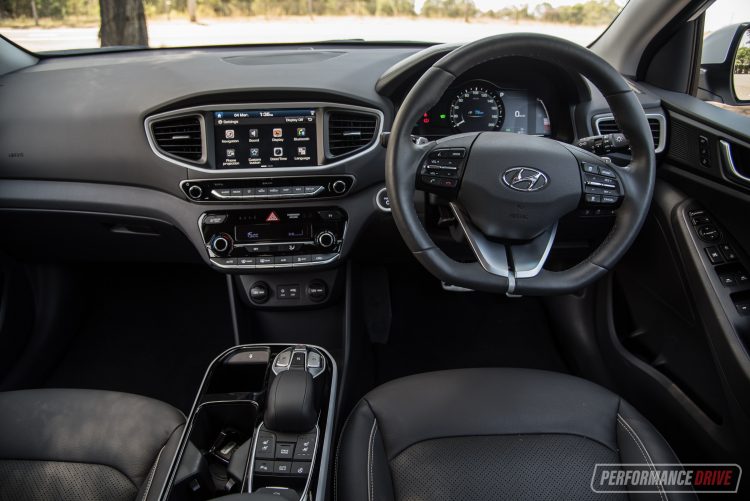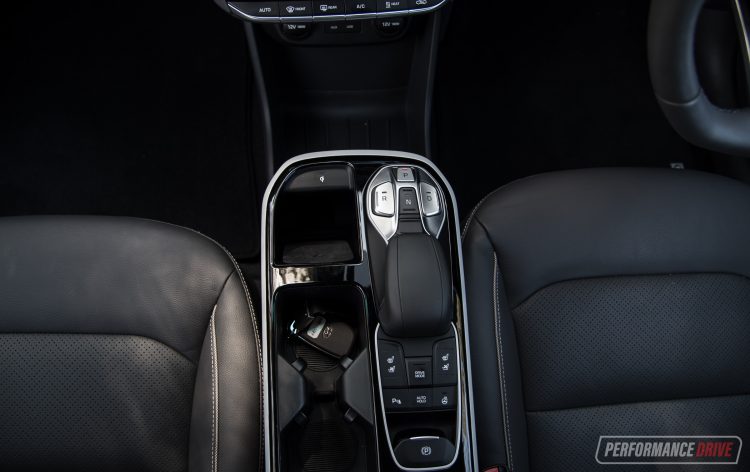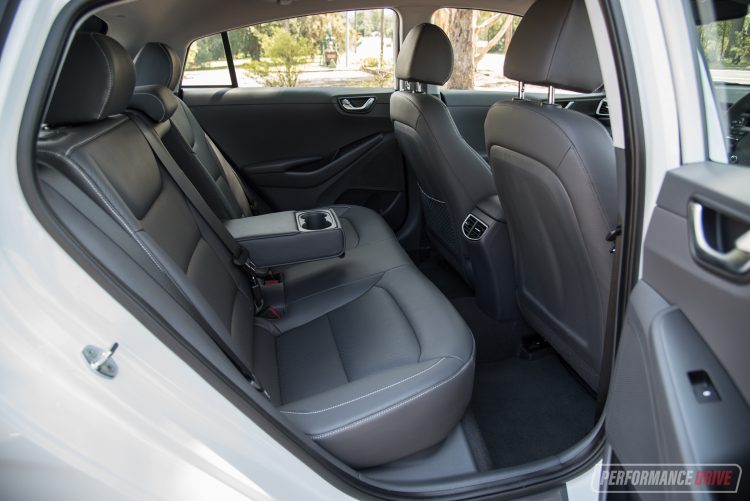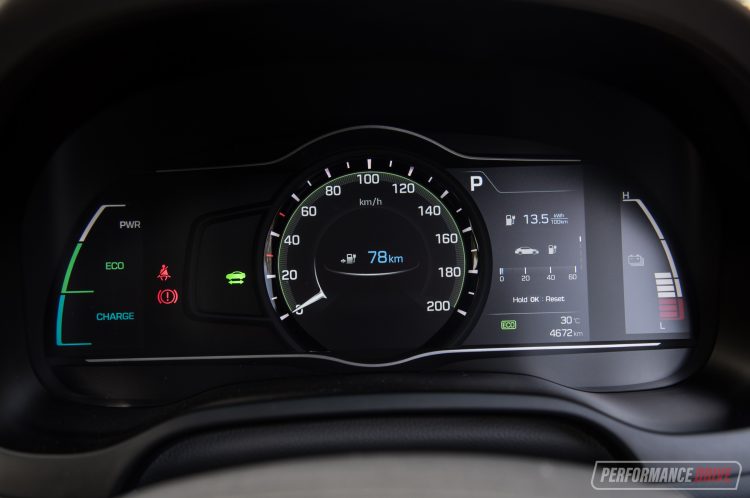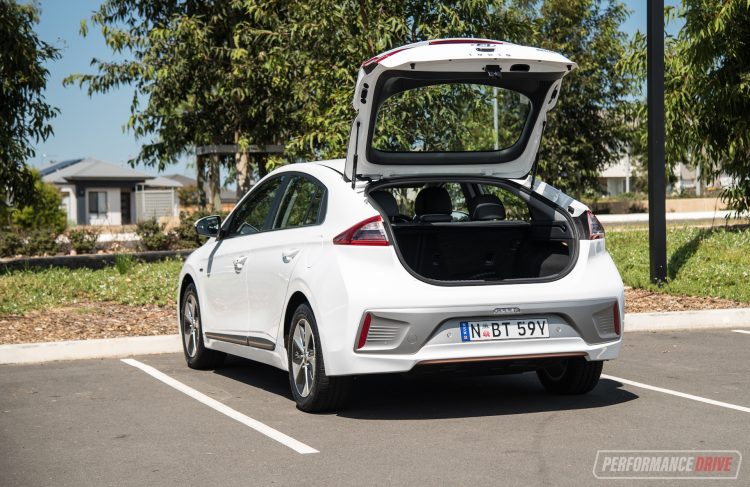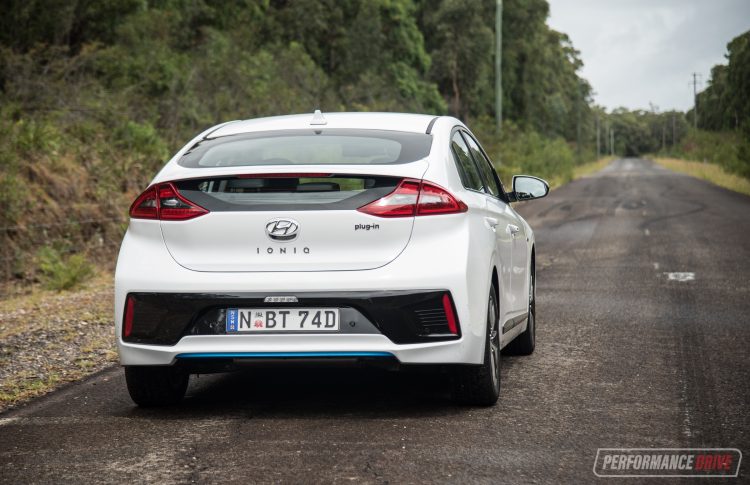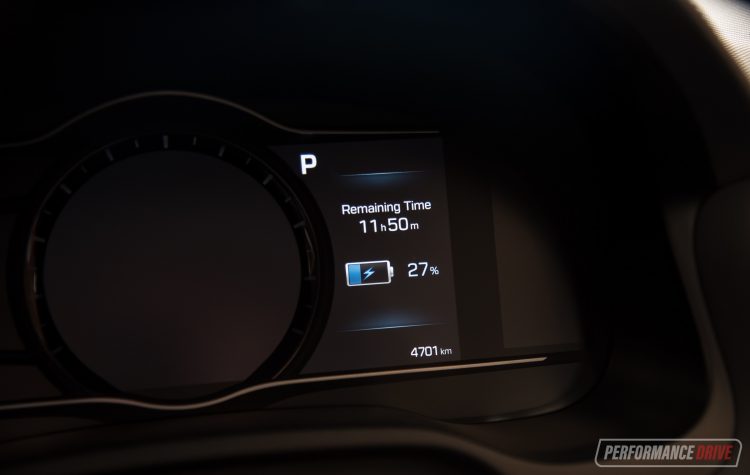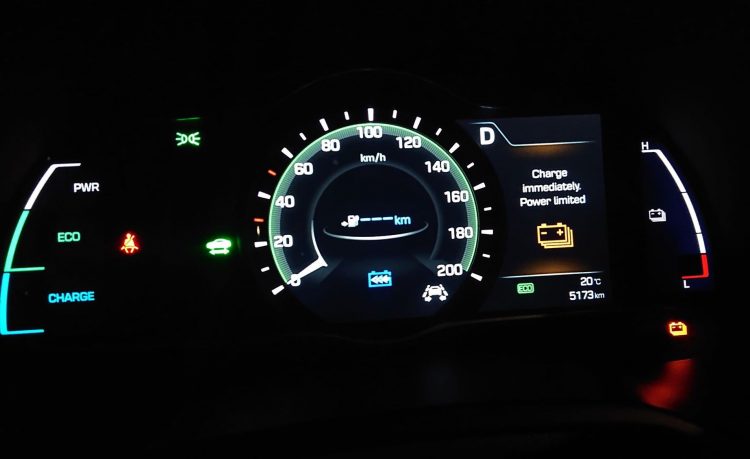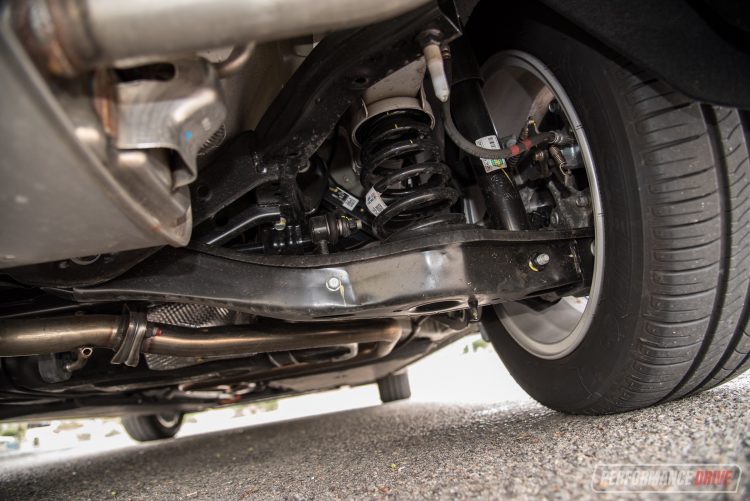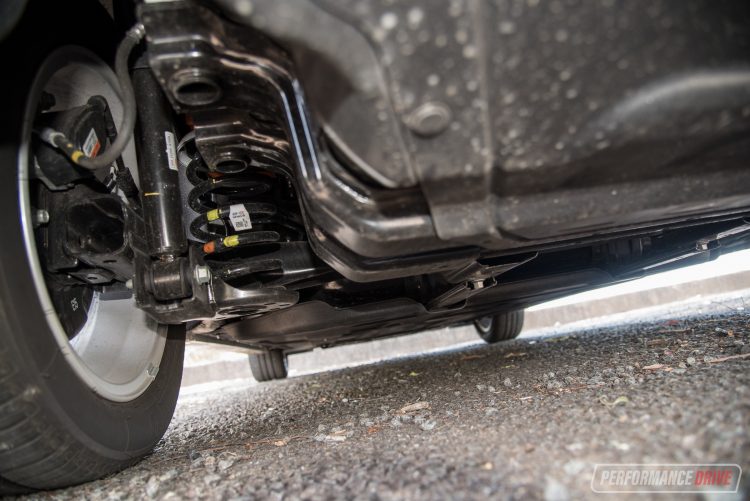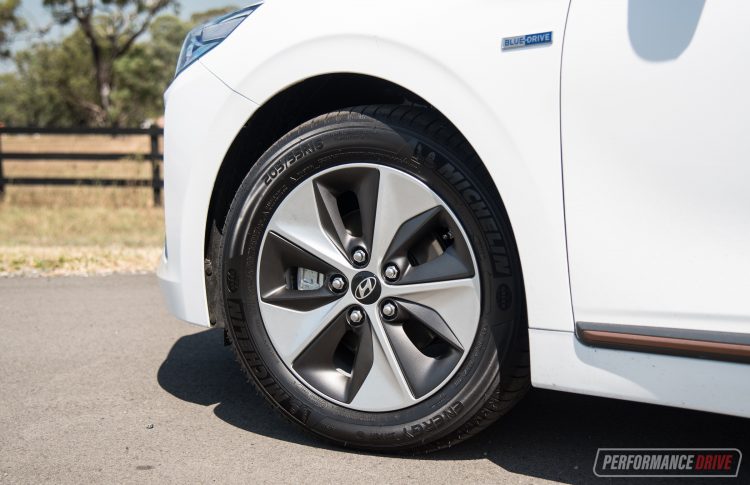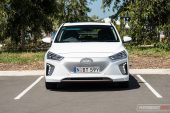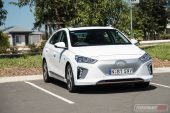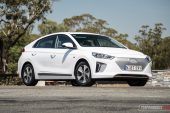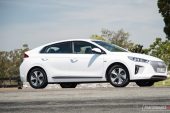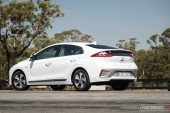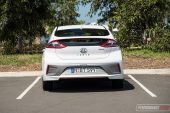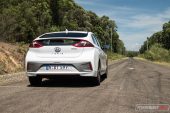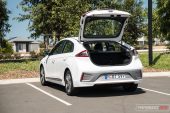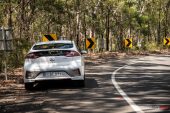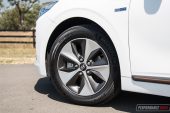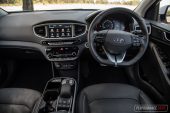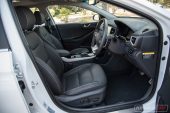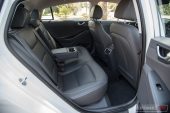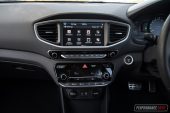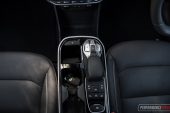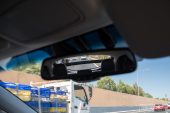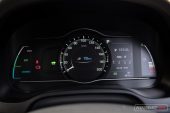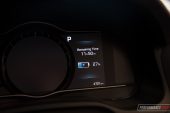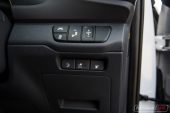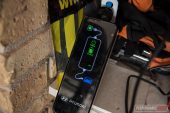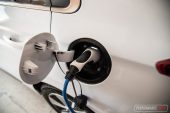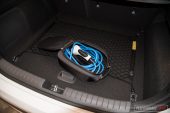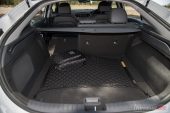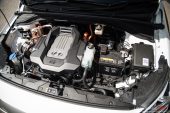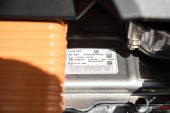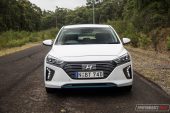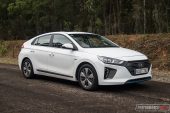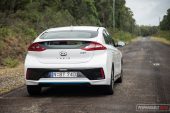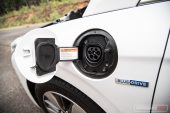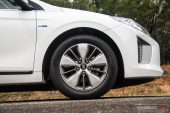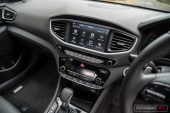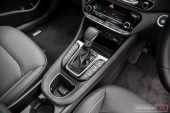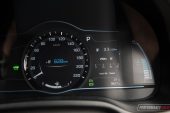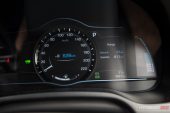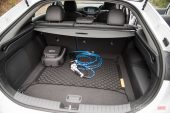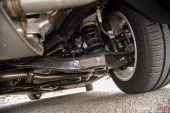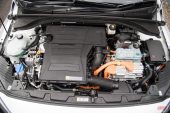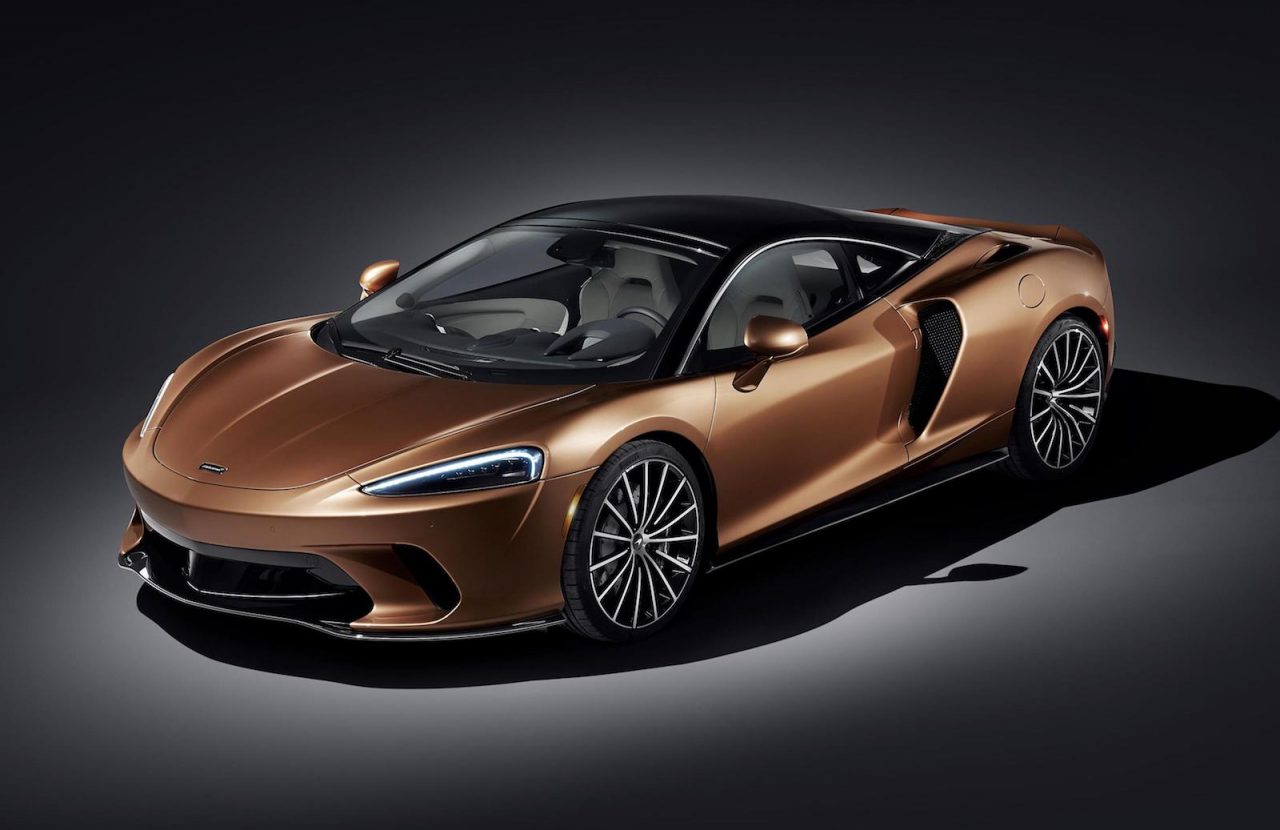It’s a race to the top to release an all-electric car which does away with those costly petrol station stops. Ever since high-profile Tesla vehicles began to roll out, there has been a market opening for similar cars that use zero petrol but priced within reach of everyday motorists. Hyundai is high on the leader board with an all-new model; the IONIQ.
Electric power has been around in the automotive industry for decades, with the likes of the Toyota Prius. But customers are still deprived of a mass-produced all-electric car that is as practical as a fossil-fuelled car, and nearly as affordable. The Hyundai IONIQ would have to be one of the closest models to achieve this.
And if all-electric doesn’t win the argument for you just yet, there’s a halfway Plug-in hybrid, or a plain Hybrid version to choose from. All three variants are available in Elite or Premium spec. Here, we’re road-testing the fully electric and the plug-in hybrid models in Premium format.
Prices vary $15k across the range, starting at $33,990 for the Hybrid Elite, and growing to $48,990 for the Electric Premium variant (plus on-road costs). See below for the full price list. The two we are looking at here are highlighted in bold.
2019 Hyundai IONIQ Hybrid Elite 6spd DCT auto – $33,990
2019 Hyundai IONIQ Hybrid Premium 6spd DCT auto – $38,990
2019 Hyundai IONIQ Plug-in Hybrid Elite 6spd DCT auto – $40,990
2019 Hyundai IONIQ Plug-in Hybrid Premium 6spd DCT auto – $45,490
2019 Hyundai IONIQ Electric Elite 1spd auto – $44,990
2019 Hyundai IONIQ Electric Premium 1spd auto – $48,990
2019 Hyundai IONIQ Premium Electric – THE SPECS
[column width=”47%” padding=”6%”]Engine: 26kWh lithium-ion battery
Output: 88kW / 295Nm
Transmission: Single-speed reduction gear auto
Drive type: Front-wheel drive
Wheels: F & R: 16×6.5, 205/55
ANCAP: Five stars
Tare weight: 1475kg
Power-to-weight: 16.76:1 (kg:kW)
Official fuel economy: 115Wh/100km
Recharge: DC max 100kW, AC 6.6kW[/column] [column width=”47%” padding=”0″]Range: 280km range ADR/230km real-world
0-60km/h: 4.26 seconds*
0-100km/h: 9.13 seconds*
60-110km/h: 6.58 seconds*
1/8 mile: 10.98 seconds at 110.9km/h*
1/4 mile: 16.82 seconds at 135.6km/h*
Max acceleration: 0.964g
100-0km/h braking: 3.02 seconds at 39.94 metres*
Max deceleration: -1.213g
Priced from: $48,990[/column][end_columns]
2019 Hyundai IONIQ Premium Plug-in – THE SPECS
[column width=”47%” padding=”6%”]Engine: 1.6-litre four-cylinder hybrid
Output (combined): 104kW / 265Nm
Transmission: Six-speed dual-clutch auto
Drive type: Front-wheel drive
Wheels: F & R: 16×6.5, 205/55
ANCAP: Five stars
Tare weight: 1527kg
Power-to-weight: 14.97:1 (kg:kW)
Official fuel economy: 1.1L/100km
Economy during test: 3L/100km
Fuel capacity/Type: 43L/91 RON[/column] [column width=”47%” padding=”0″]Power efficiency: 92.72kW:L/100km
0-60km/h: 4.45 seconds*
0-100km/h: 9.72 seconds*
60-110km/h: 7.00 seconds*
1/8 mile: 11.24 seconds at 109.0km/h*
1/4 mile: 17.14 seconds at 136.7km/h*
Max acceleration: 0.617g
100-0km/h braking: 3.00 seconds at 38.57 metres*
Max deceleration: -1.173g
Priced from: $45,490[/column][end_columns]
* Figures as tested by PerformanceDrive on the day. Factory claims may be different
2019 Hyundai IONIQ Premium Electric & Plug-in – THE PACKAGE
The only hints that the IONIQ might be an electric car is in the lack of a front grill, the aerodynamic-designed tall boot commonly used in electric or hybrid vehicles, and in the name ‘IONIQ’ itself. The rest of the car looks like an unassuming conventional mid-size car that doesn’t really share any design elements from other Hyundai models. It is built on the i30 and Elantra platform, but it doesn’t share any powertrains or body panels.
Inside, it is even harder to spot that you’re in an all-electric or hybrid car; and that’s the way it should be. You shouldn’t need to feel different for being electric. The materials and layouts are comfortable and as easy to use as any other car, falling perfectly in line with Hyundai’s reputation. Anyone who might be nervous to drive an electric vehicle has no need to be. The all-electric version has four easy buttons to select (reverse, drive, neutral or park) instead of the usual gear leaver. But it’s even easier to use than a gear leaver.
All IONIQs in the range come well-packaged with an eight-speaker sound system with Android Auto, Apple CarPlay and digital DAB+ radio, dual-zone climate control, key proximity locking, distance-controlled cruise control, daytime running LED lamps, a full-sized spare alloy wheel, and tyre pressure monitoring. Even safety features are generously included. You get blind-spot sensors, rear parking sensors, low- and high-speed forward collision mitigation with pedestrian avoidance and autonomous braking, driver attention detection, lane departure warning with passive steering input, and rear cross-traffic warning.
Models with the Premium nameplate score front parking sensors in addition to the rear, a fully digital instrument display, electric driver’s seat, LED headlamps, heated and ventilated front seats, leather-accented trim, an electric sunroof, puddle lamps, and auto dipping door mirrors when reversing.
Like with all Hyundai cars, longevity is assured with a five-year unlimited kilometre warranty. And IONIQs get an additional three years (eight years or 160,000km all up) on the battery. Servicing costs are capped at $160 per year for five years on the Electric variant, and a total of $1525 across five years for the hybrid models.
2019 Hyundai IONIQ Premium Electric & Plug-in – THE DRIVE
Driving an all-electric car is quite unique. The delivery of power is very different to what you might be used to – but in a good way. Acceleration from the 26kWh lithium-ion battery is instant when you put your foot down. We’re used to a slight delay for gears to change, turbos to wind up, and combustion chambers to crank up the mixtures. You don’t get that in the IONIQ Electric.
All 88kW and 295Nm are on tap immediately, no matter what speed you’re travelling at. It feels torquier or more proficient for getting up hills than it is powerful for getting up to speed rapidly. In fact, we timed 0-100km/h in 9.12 seconds. That’s not bad but the figure doesn’t really do it justice compared with what you feel in your seat.
The Electric also has selectable driving modes: Normal, Eco, and Sport. Eco mode flattens out throttle response and torque delivery to maximise efficiency, and torque is limited to 265Nm in both Eco and Normal modes. Sport mode increases steering heaviness, sharpens throttle response and torque delivery, and unlocks the full 295Nm from the motor.
When you cut acceleration, you notice significant back pressure as the energy from your momentum is used to charge the battery. This back-pressure level is adjustable with three stages using the steering wheel paddle shifters. The lowest setting will allow you to coast more freely, but won’t charge the battery at the full potential, while the highest setting creates the most friction and charges the battery the most. The highest setting also pulls the car back so much that you will rarely need to touch the brakes during open-road driving. It sounds technical, but it is very quick and easy to get used to.
The unique experience continues in what you hear (or don’t hear). The IONIQ would make a great luxurious chauffeur car as it is whisper-quiet and smooth – more so than a conventional vehicle. Only a weak whining sound can be heard, which takes getting used to if you rely on engine noise or gear ratios to judge your speed. The standard tyre noise then starts to kick in above 60km/h.
For those who feel that all-electric is a bridge too far, the plug-in hybrid shares some of the driving traits, but at a weaker level. So, when desired outputs are struggling, the petrol engine will kick in. The plug-in hybrid also doesn’t have the charging back pressure adjustment on the paddle shifters like the fully electric model. That’s because it uses a conventional six-speed dual-clutch automatic gearbox to deliver the power. This hybrid setup relies on the electric power more than the petrol engine, so it is a greater step into the electric world than say a Toyota Camry hybrid or Corolla hybrid.
Power comes from the combination of a 1.6-litre four-cylinder petrol engine, and an electric motor powered by an 8.9kWh lithium-ion battery. Combined, they produce 104kW and 265Nm. Performance feels much the same in either cars. In fact, we found only a small difference in the 0-100km/h race, with the plug-in hybrid stopping our Vbox clock in 9.72 seconds.
You can drive the plug-in variant in electric mode for a certified range of 63km. What’s really interesting though is using the six-speed transmission while in electric mode. It’s a strange sensation clicking through the gears while enjoying the almost silent hum of the electric motor as it works you up to speed.
It feels good to say that the IONIQ Electric uses 0L/100km. And the plug-in hybrid uses a mere 1.1L/100km. However, adjusting to the new way of ‘refuelling’ will be the biggest change you experience. In the Electric, your trips need to be more planned and less spontaneous as the travelling range is roughly 230km (reduces by 10-30km when using the air-conditioning). And you cannot simply turn into the nearest petrol station to refuel (unless you borrow their power point for a few hours and wait).
For charging, the IONIQ Electric can plug-in to a standard household socket using the supplied cable, as well as into an AC charging station, or a specialised DC fast-charging station. The cable plugs into where the petrol filler is usually positioned, and is about the length of the car. In the official press release, Hyundai explains:
“Using a commercial 100kW DC fast charging station, the IONIQ Electric can be charged to roughly 80 percent in 23 minutes (or in 30 minutes when connected to a 50kW fast charging station). A 6.6kW on-board AC charger can charge the high-voltage battery in 4 hours 25 minutes when connected to a charging station of equal or higher capacity. With the installation of a personal charging station, this will allow a full overnight charge at home. JET Charge is Hyundai Motor Company Australia’s preferred partner for domestic charging station installations, and installations can be arranged nationwide through customers’ local Hyundai IONIQ dealership.”
To help reduce costs, and charge off-peak, the on-board charger features a built-in charge scheduling function. This is edited via the in-dash 8.0-inch multimedia touch-screen. It takes roughly 12 hours to reach full charge from zero when plugged into a household 240V AC outlet. Hyundai also clarifies that “the IEC 62196-3 Configuration FF (CCS Combo2) connector is compatible with all external power sources, and for AC charging the CCS Combo2 connector is also compatible with a standard IEC 62196-2 Type 2 plug, the same as that used on the IONIQ Plug-in.”
It is simple to plug the charger into standard power points, and fast charging stations. We used a no-cost NRMA fast-charging station at Mittagong RSL club on the NSW Southern Highlands, and it took about 45mins to recharge when we had a 20km range left in the batteries.
During our testing of the IONIQ Electric we wanted to see what happens when you run the travelling range right down to 0km. After many warnings, power is reduced when 8km is left on the range. Acceleration is significantly cut so you can crawl to the nearest power outlet. We got to 0km when we arrived to our charging point, and the car was still functioning, albeit very sluggishly.
The biggest setback to the Hyundai IONIQ isn’t a fault of the car itself. Like with all electric cars on the market, Australia’s infrastructure is not yet set up to handle these cars at a mass level. Although you can charge them at your home, fast chargers for when you’re out and about are not common enough. And there are only a small handful of standard charge carparks in shopping centres and other public areas. As we can see electric cars trending with all car manufacturers, what happens when this technology becomes more popular? If your home has a car space away from your building, or you only have street parking, you probably need to opt for the non-plug-in hybrid for now.
In terms of ride and handling, the IONIQ’s Australian-developed steering and nimble chassis delivers top-shelf comfort and refinement. Every IONIQ features a MacPherson strut front suspension design. At the rear, the IONIQ Electric uses a torsion beam axle that helps to balance battery storage with cargo space. As the Hybrid and Plug-in have more compact batteries, they feature a more dynamic multi-link rear suspension, also tuned in Australia, which delivers brilliant ride quality and athletic handling.
Even pushing hard in the corners, the IONIQ feels surprisingly spirited and capable, with tyre squeal held off until really deep in corners. The steering feels light and playful, and the ride quality really is superb. We think this is one of the best-balanced Hyundais on the market, in terms of overall comfort and refinement. Hyundai’s decision to fit Michelin tyres helps out in this department too, compared with the inferior Nexen tyres featured on other models, such as the Kona Electric.
2019 Hyundai IONIQ Premium Electric & Plug-in – THE VIDEO
2019 Hyundai IONIQ Premium Electric & Plug-in – THE VERDICT
Hyundai has successfully executed its first real attempt at the electric vehicle market with the IONIQ. It proves to be one of the most usable and affordable all-electric cars available to anyone who can afford a car.
Although you will need to organise your travel more laboriously, it’s well worth the compromise considering you’re saving around $80 per week in petrol costs. But you do need to have a car space near a power point, or access to chargers at work. You also need to have a lifestyle where your usual travels are relatively short.
Behind the wheel, only positives come out of driving the IONIQ. Ride quality, handling performance (for what it is), and sense of engagement are not compromised at all. This is a lovely car to drive. Our pick is the full electric version simply because it is so quiet and refined.
[column width=”47%” padding=”6%”]PROS:
– As easy to drive as a conventional car
– Well-packaged range
– Very refined ride quality and driving dynamics
– Spacious and practical cabin
– Price is within reach for many drivers
– Outstanding fuel economy (obviously)[/column] [column width=”47%” padding=”0″]CONS:
– Electric variant suits those living in dense areas; 230km range is a bit small
– Electric misses out on multi-link rear suspension featured in the hybrids
– Rear view slightly obscured by hatch cross-bar[/column][end_columns]
As always, if you’re thinking about buying a new car don’t forget to click here to speak with our car buying specialists.
